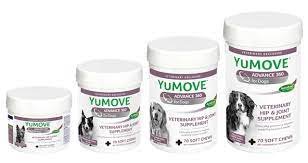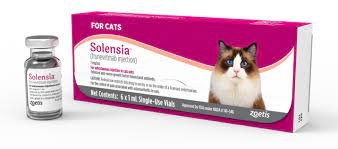
We continue to receive new tools to help us improve the lives of our beloved pets.
Some of our pets may hurt.
One of the most frustrating conditions that all animals suffer is pain, especially chronic pain. Pain can be secondary to the collective wear and tear on our joints through use. It can be secondary to an injury or an anatomical malformation that predisposes joints to deterioration and Degenerative Joint Disease or Arthritis. Many of us suffer from various levels of pain in our joints and we recognize how it affects our ability to do things that seemed easy and even essential before the pain arrived.
Sometimes, the evidence of pain is obvious.
Maybe we limp, indicating an asymmetrical joint issue. Limping is often evident. However, what do we look like when joints are affected more or less symmetrically? You don't really have a limb to limp on. So maybe we move slower. This can be amplified when we are forced to do things like climb stairs or get up from a chair. We may not cry out or moan or whine but instead we grit through the pain because what else is there to do?
Our pets can likewise deceive us.
They often aren't dramatic (although some may be) and will often just subtly change their behaviors to avoid things that hurt. They may move less overall. They may move more slowly. They may no longer climb stairs voluntarily or with the same zip. Maybe getting up into the car or onto the couch may be more laborious. Many of these things are discounted as aging changes, but if we stop to consider, what about aging causes us to "slow down?" A big part of that is pain! It may be even more difficult to recognize these changes in cats because they naturally spend a lot of time laying around. Some are playful and predatorial, and we might notice a change in energy, but many are pretty calm, and so changes in activity may be missed. (Check here for a great checklist that may help you recognize that your kitty is not all they could be!)
Solving the puzzle.
So first, we have to have a suspicion that our pet might be painful. It's ok that we don't just know, but it makes sense, especially as pets get older (double digit ages?) that we consider if they might be suffering discomfort. Then, we can engage in a therapeutic trial of a pain medicine for a couple weeks to see if they improve. Sometimes we're quite surprised at the change. We win also if they don't become more active, then maybe we take heart that they are not yet painful, and revisit another therapeutic trial in a year or so.
So now what?
This is where the benefits of new discoveries become exciting! We have drugs, which are so crucial to helping to control pain in our animals, but while effective, they can be less than ideal since they can have side effects we don't desire including the potential to aggravate other health conditions. We trust and rely on NSAIDs and narcotic-like drugs in our more problematic cases or following injuries/surgical procedures that create more acute and intense pain. But wouldn't it be nice to change the inflammatory pathways causing pain and triggering nerve hypersensitivity without the side effects. What if it could be done without drugs at all? Well especially in the earlier cases of arthritic deterioration, we have some pretty amazing breakthroughs.

YuMove! Complete nutritional joint support... finally!
A new product has been released that combines some well known and established joint supplements to provide an enhanced attack on joint inflammation and degenerative joint disease from a solely nutritional direction. We already talked about Antinol and the research that proves that it can provide Carprofen levels of pain relief in patients with no drug (See previous Blog post dedicated to Antinol). Now, YuMove has taken the same Green Lipped Mussel extract and all its benefits and combined it with Glucosamine, Hyaluronic Acid, and Omega fatty acids to make a complete product! I have for some time lamented that we had some great products, each containing one or more of these (Joint Mobility food by Purina contains proprietary fatty acids and glucosamine, Antinol contains Green Lipped Mussel extract, and Dasaquin has been my favorite and most effective glucosamine product) but we'd have to buy multiple products to really make use of the full spectrum of nutritional advances that we have available, and this, of course, becomes expensive. Now, we have a complete product that I hope will synergize all of these different directions to lessening inflammation and nourishing aging and damaged joints!!! (Check here for the science behind YuMove)

Solensia (only for cats at this time... but stay tuned!)
And now we have received the newest and most novel approach to pain management, a product that uses monoclonal antibodies to block pain producing neurochemicals that create a feedback loop enhancing inflammation and the pain the patient feels. This exciting immunotherapy is new to American veterinarians and is a once monthly injection that has shown wondrous effects since being released, and substantiates the benefits already realized from it's availability in Europe. This is insanely safe as it is a highly targeted immune blocker to a nerve factor that increases dramatically in production in patients with arthritic changes. Its only limitations is it is not to be used in animals less than one year or pregnant or soon to become pregnant animals since in the growing pet, this nerve factor has a useful role in developing the growin nervous system. Once the patient is full grown, high levels are only found in animals with degenerative changes, and thus can safely be modulated with this monoclonal antibody. We have been teased that this breakthrough therapy will be coming out for dogs, probably in 2023, and that research is well underway for humans! (Check here for more information on Solensia)

Take-away message.
So these are some very recent additions to our pain relieving tool box. Incredible safety and exciting efficacy. Further, they aren't mutually exclusive. We can have a dog or can on YuMove and also add an NSAID on top of it, as the need requires, whether for those breakthrough days of increased pain or ongoing as the joint damage progresses. By using nutritional tools that not only help with pain but nourish the joints, we can reasonably expect a slower progression of the deterioration and thus a longer period of comfort before having to ramp up to higher levels of pain relief. The same is true for Solensia in cats. It not only helps with pain, but actually blocks the pathway of joint deterioration to slow the progression. A once monthly injection may be all kitty needs, but if things progress, we can add YuMove and/or NSAIDs as the patient demands.
Please contact your veterinarian for information on these exciting new advances for pain control and do your friend a favor and watch their activity and behaviors intently from time to time to gauge if maybe an assessment is appropriate.
This was a 30 Oct 2022 Blog post on my business blog @www.animalhospitaltn.com